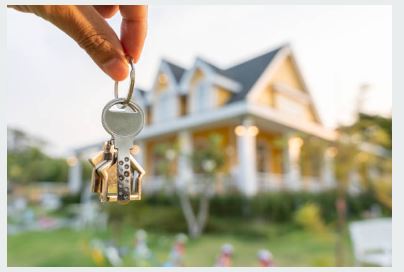 As society evolves, so too does our understanding of the environments in which we live and work. In recent years, a notable shift has emerged in real estate: the wellness premium. This concept revolves around the idea that health-focused buildings, designed to enhance the physical and mental well-being of their occupants, are becoming highly sought after, translating into increased property values and desirability. As we navigate a world grappling with health challenges and an emphasis on holistic living, the demand for spaces that prioritize well-being is reshaping urban landscapes and driving market trends.
As society evolves, so too does our understanding of the environments in which we live and work. In recent years, a notable shift has emerged in real estate: the wellness premium. This concept revolves around the idea that health-focused buildings, designed to enhance the physical and mental well-being of their occupants, are becoming highly sought after, translating into increased property values and desirability. As we navigate a world grappling with health challenges and an emphasis on holistic living, the demand for spaces that prioritize well-being is reshaping urban landscapes and driving market trends.
Picture a residential high-rise bathed in natural light, featuring expansive windows that offer stunning views of lush greenery. Inside, residents enjoy amenities such as air purification systems, fitness centers equipped with the latest technology, and communal spaces designed to foster social interaction. This environment is not just a backdrop for daily life; it’s an ecosystem meticulously crafted to promote health and wellness. Research has shown that exposure to natural light, access to green spaces, and the availability of fitness facilities can significantly enhance the quality of life for occupants.
Investors and developers are taking note of this seismic shift. Properties designed with wellness in mind often feature elements such as biophilic design, which integrates natural elements into the built environment. This might include living walls, indoor gardens, and water features that create a calming atmosphere. Such features are not only aesthetically pleasing but have been shown to reduce stress and improve mental clarity.
Furthermore, the rise of remote work has influenced property values in unprecedented ways. As more people find themselves working from home, the importance of a healthy living environment has come to the forefront. Homebuyers are increasingly searching for properties that offer dedicated office spaces, ergonomic design, and amenities that promote work-life balance. The wellness premium is now extending beyond traditional urban settings, as individuals seek homes that provide tranquility and productivity, regardless of their location.
The impact of health-focused buildings extends beyond immediate financial gains. Studies indicate that properties designed with wellness in mind tend to have lower vacancy rates and longer tenant retention. This stability is a compelling argument for investors who recognize the long-term value of wellness-oriented developments. As the wellness movement continues to gain traction, the market for health-focused properties is likely to expand, creating a ripple effect that influences overall property values across various sectors.

However, as we delve deeper into the wellness premium, it’s important to consider accessibility and inclusivity. While many new developments are embracing wellness features, there is a risk that such properties may become exclusive to certain demographics, potentially exacerbating socioeconomic disparities. Developers and policymakers must work collaboratively to ensure that wellness-oriented buildings are available to a diverse range of residents. This might involve incorporating affordable housing initiatives that prioritize health-focused designs, ensuring that the benefits of the wellness premium are accessible to all.
Moreover, the path to creating health-focused buildings is not without its challenges. The initial investment in wellness features can be significant, and developers must navigate regulatory hurdles and building codes that may not prioritize these elements.
creating health-focused buildings is not without its challenges. The initial investment in wellness features can be significant, and developers must navigate regulatory hurdles and building codes that may not prioritize these elements.
Ultimately, the wellness premium represents a powerful intersection of health, design, and real estate. As more individuals seek environments that nurture their well-being, the demand for health-focused buildings will reshape our cities and communities. By investing in wellness, we are not just enhancing property values; we are fostering a culture that prioritizes health, happiness, and connection. The future of real estate lies in the recognition that our environments profoundly influence our lives, paving the way for a healthier, more vibrant society. Seaport Credit recognizes this shift and actively supports financing for health-focused developments, helping bring wellness-oriented properties within reach for more communities. By partnering with developers committed to creating healthier, more livable spaces, Seaport Credit plays a vital role in promoting a real estate market that values both well-being and economic resilience.
The best finance option: www.Seaportcredit.com

